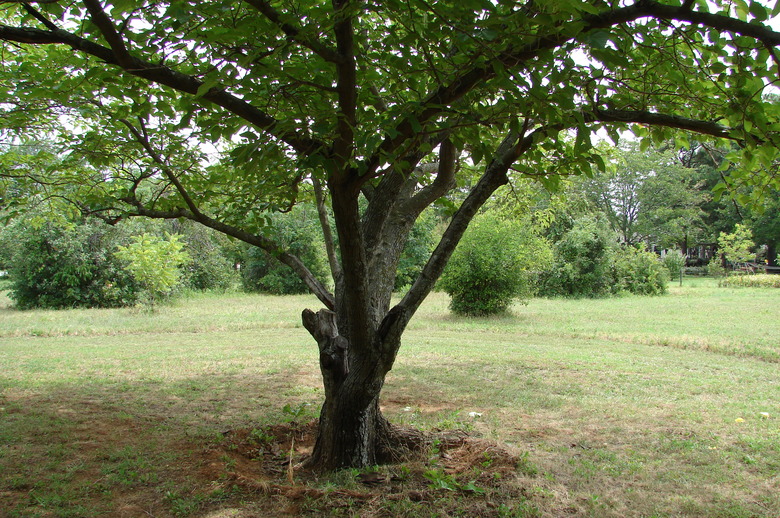What Is A Fruitless Mulberry Tree?
There are several species of mulberry trees (Morus spp.), which are fruit trees that produce drupes that resemble blackberries and are enjoyed by birds.
Fruitless mulberry trees are cultivars of the white mulberry (Morus alba), a species native to Asia that has become invasive in many parts of North America. These deciduous trees typically have a fast growth rate and are winter hardy in USDA hardiness zones 4 to 8.
Are Mulberry Trees Invasive?
The white mulberry tree is a highly invasive species with surface roots that can be very damaging to sidewalks and other infrastructure. This species is native to China and, because it is a host for silkworms, was introduced in North America during the colonial period as part of a failed attempt to produce silk in the U.S.
In addition, the fruit of the white mulberry tree is very messy and capable of staining sidewalks and cars and even indoor spaces if transported accidentally on the bottom of shoes. Therefore, planting fruitless cultivars is usually the better choice.
Tip
Fruitless white mulberry trees are favored because the fruit of these trees can create quite a mess.
Fruitless Mulberry Trees
Many cultivars of mulberry trees are dioecious, which means there are separate male and female trees. Only female trees produce fruit. Therefore, fruitless mulberry trees are usually either male. Or, in the case of monoecious mulberry trees that have both male and female flowers, some cultivars have been bred to be fruitless.
Examples of fruitless mulberry trees include 'Stribling,' 'Hempton' and 'Bellaire.' Let's take a look at some additional white mulberry cultivars that bear little or no fruit.
Chaparral
The Chaparral mulberry cultivar (Morus alba 'Chaparral,' zones 4 to 8) is a dwarf tree with heights between 6 and 8 feet. It is usually grafted onto a full-sized mulberry rootstock. This cultivar has a weeping growth habit.
Like the species white mulberry, this cultivar has dark green leaves that are usually lobed. A downside of this species is that the branches are weak and can break easily.
Kingan
The Kingan tree (Morus alba 'Kingan,' zone 5 to 9) is a male white mulberry cultivar that does not produce fruit. It is a fast-growing tree that can reach heights between 30 and 50 feet. This cultivar is even more drought tolerant than other white mulberry cultivars.
Fruitless
The aptly named Fruitless cultivar (Morus alba 'Fruitless,' zones 3 to 9) has heights between 30 and 40 feet and adds about 3 feet of growth per year. This tree is considered resistant to a fungal disease known as Texas root rot.
Unryu
Unryu (Morus alba 'Unryu,' zones 4 to 8) is a Japanese mulberry cultivar that has gnarled, contorted branches. It is capable of reaching up to 40 feet in height, but is usually pruned to heights of 15 feet or less. This fruitless mulberry has glossy, light green leaves that are about 7 inches long and turn an attractive shade of yellow in the fall.
The Unryu mulberry tree is not completely fruitless but produces very little fruit.
References
- University of Florida IFAS Extension: Morus Alba Fruitless Cultivars – White Mulberry
- Conservation Garden Park: Chaparral Weeping Mulberry
- Missouri Botanical Garden: Morus alba 'Chaparral'
- University of Minnesota Extension: Unryu Contorted Mulberry
- Missouri Botanical Garden: Morus alba 'Unryu'
- The Morton Arboretum: White mulberry (males or fruitless cultivars)
- Conservation Garden Park: Kingan Mulberry
- Missouri Botanical Garden: Morus alba
- The California Polytechnic State University: SelecTree – Fruitless Mulberry Tree
